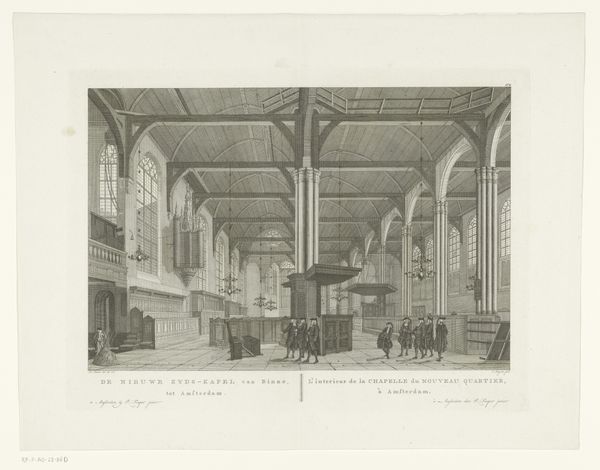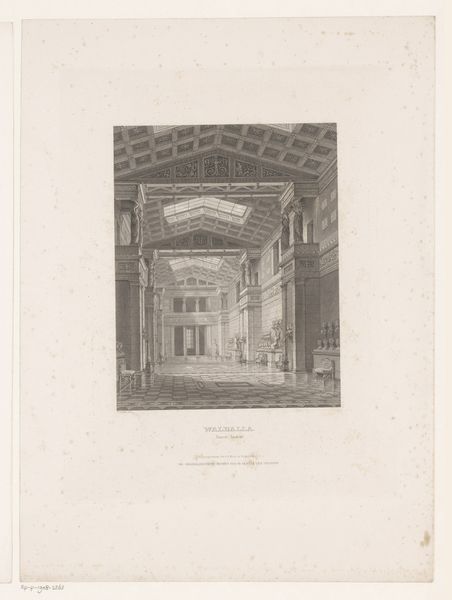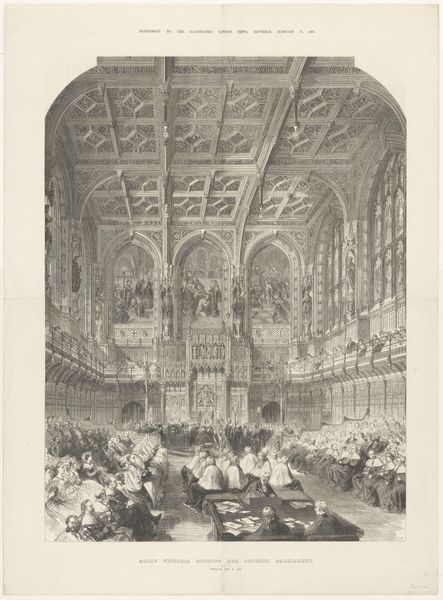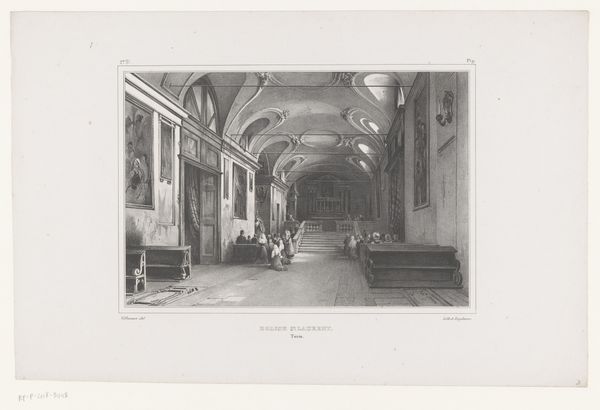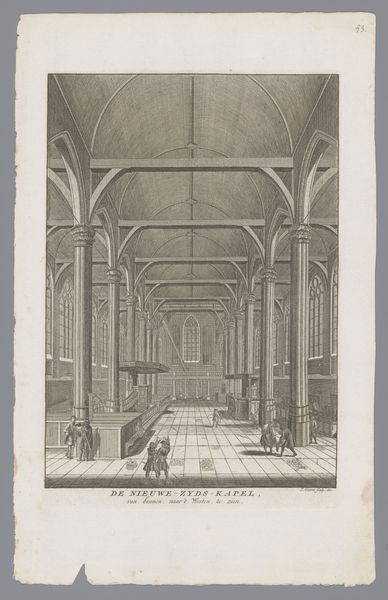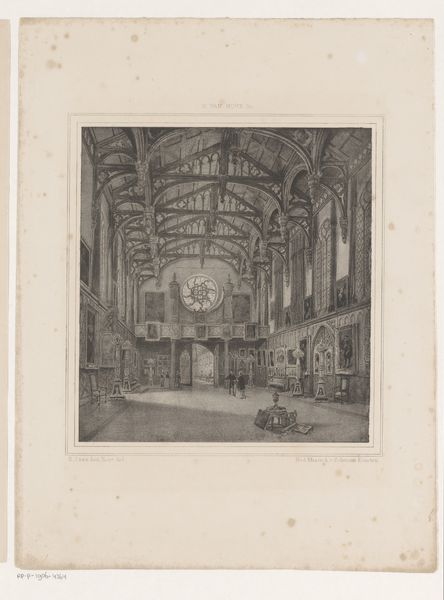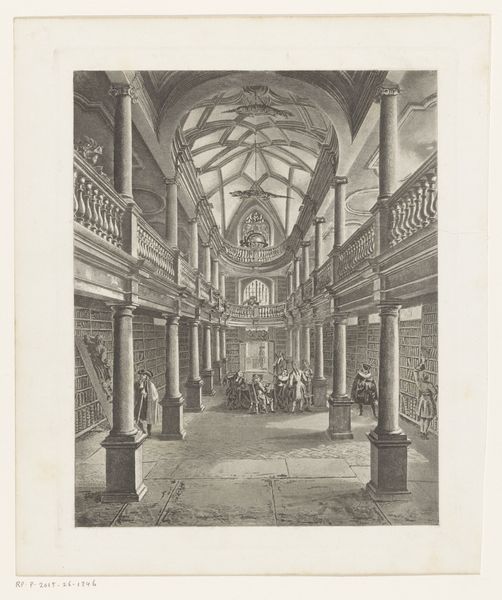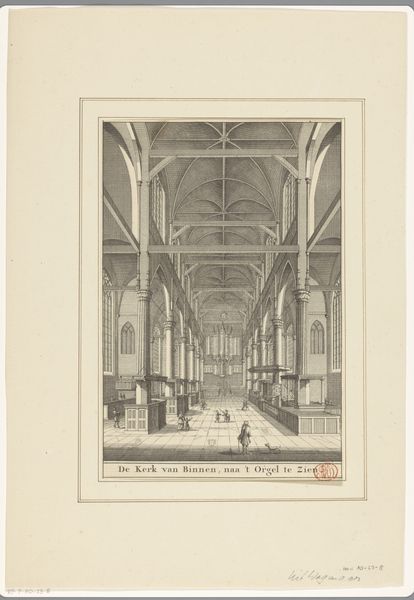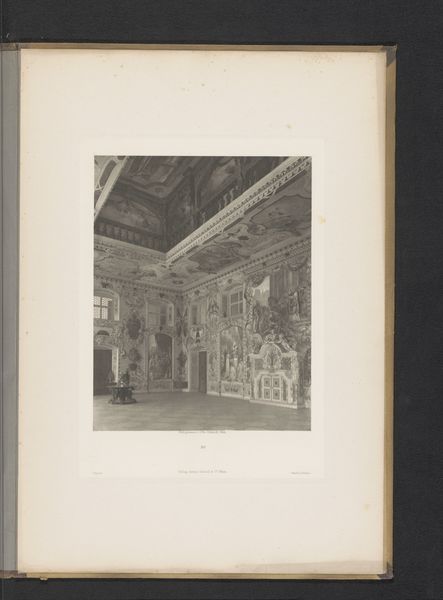
drawing, print, graphite
#
drawing
# print
#
landscape
#
perspective
#
romanticism
#
graphite
#
cityscape
Dimensions: height 433 mm, width 288 mm
Copyright: Rijks Museum: Open Domain
Editor: This drawing, created with graphite, is titled "Zicht vanuit een arcade van het Camposanto in Pisa," and it was produced by Emile Herson in 1838. The long arcades create a seemingly infinite perspective, but they also feel quite somber and confining. What do you see in this piece? Curator: What immediately strikes me is how Herson uses the architecture to frame not just the cityscape beyond, but also the social dynamics within the Camposanto. Consider, for a moment, the function of spaces like these in 19th-century Europe. How did architecture enforce class distinctions and gendered behaviors? Are those binaries upheld by the arrangement of bodies we see here? Editor: That’s interesting. I hadn’t considered the way the space is being used, I was too focused on the arches. You’re right; the people in the foreground are dwarfed by the scale of the architecture, almost like they're placed *there* to make a point about society or religion. Curator: Exactly! And how does the artist create a tension between the secular world and the sacred space, using light and shadow to demarcate power, exclusion, or maybe even resistance? It reminds us that these "landscapes" are not merely objective records but cultural statements deeply invested in power. What do you make of that architectural embellishment that almost seems frivolous juxtaposed to monastic robes and bare walls? Editor: So much of art history focused on aesthetics rather than function or identity. Paying closer attention to historical context changes everything! Curator: Precisely. By reading the visual language of the artwork within the social and political conditions of its time, we can unearth its meaning beyond what's immediately visible. Art constantly converses with us when we pose it complex queries.
Comments
No comments
Be the first to comment and join the conversation on the ultimate creative platform.
